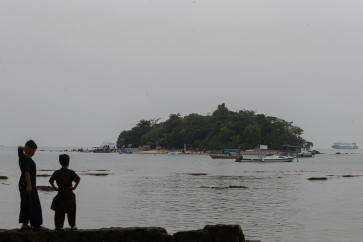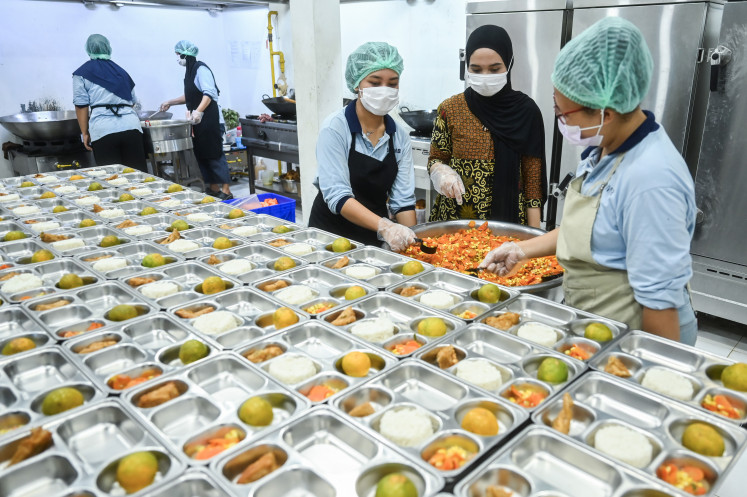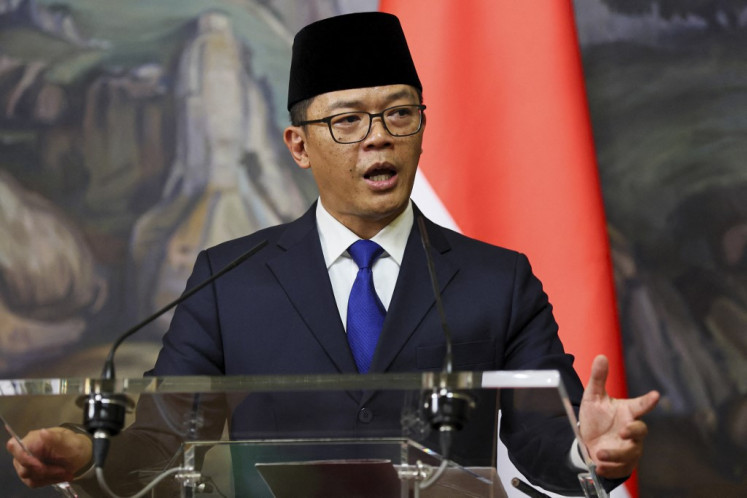Popular Reads
Top Results
Can't find what you're looking for?
View all search resultsPopular Reads
Top Results
Can't find what you're looking for?
View all search resultsIndonesia `still struggling' to improve health for the poor
Indonesia's infant and child mortality rates have declined, but maternal mortality rates remain "among the highest in East Asia", a World Bank report said
Change text size
Gift Premium Articles
to Anyone

Indonesia's infant and child mortality rates have declined, but maternal mortality rates remain "among the highest in East Asia", a World Bank report said.
Indonesia has made "major improvements", but "struggles to maintain and continue to improve important health outcomes for the poor and achieve the Millennium Development Goals," said the report released Thursday titled "Health financing in Indonesia."
The World Bank noted that infant and child mortality rates had fallen by 50 percent since the early 1990s, "but the decline appears to have slowed since 2002".
Targets of the United Nations' Millennium Development Goals include reducing the ratio of maternal mortality by three quarters from 1990 to 2015. There are currently 420 deaths for every 100,000 births.
"Indonesia's growing economy, political stability and decentralization prospects now allow it to think expansively about healthcare," said the report, which reviews the government's ongoing efforts to improve the health system.
World Bank director for Indonesia, Joachim von Amber, said he believed the country could become a rare example among fellow middle-income countries.
"Indonesia could potentially become one of the very few middle-income countries to successfully provide universal health insurance for its population. Already we are seeing the government make positive headway on this agenda through programs for the poor," he said.
"However, the country still faces significant challenges in developing and implementing an effective and sustainable health financing reform," von Amsberg added.
The government is preparing a highly ambitious plan to provide free medication for all citizens by intensively expanding its community health insurance Jamkesmas program by 2013, according to an official from the Welfare Ministry.
The Jamkesmas program is a new health insurance scheme for poor people launched by the government in early 2008 to replace a previous program.
"Currently, around 115 million people, which represent 50 percent of the total population, are included in the program," said Welfare Ministry secretary Dwi Suryo Indroyono Susilo.
The World Bank report also suggests three approaches to support the government's goal of health insurance for the every citizen by 2013.
The first approach is similar to the national health service in Sri Lanka and Malaysia, and involves expanding the current government's health insurance for the poor.
The second approach is funded through both wage-based contributions for public and private sector workers, along with government contributions to the poor and other disadvantaged groups.
The third approach is a combination of the two, in which the poor and other disadvantaged groups will be covered by a government-financed system, while others are covered through multiple funding of mandatory health insurance on a contributory basis. (hdt)
Health Outcomes and Trends in Indonesia
Indicator 1997 2007
Life expectancy at birth, total (years) 65 69
Infant mortality rate (per 1,000 live births) 45.7 34.0
Under 5 mortality rate (per 1,000) 58.2 45.0
Maternal mortality ratio (per 100,000 live births) 425 228/420
Births attended by skilled health staff (% of total) 49.1 73
Birth delivered at a health facility (% of total) 20.7 46.1
Under 5 underweight malnutrition (% of total) 29 27
Source: Health financing in Indonesia, World Bank









